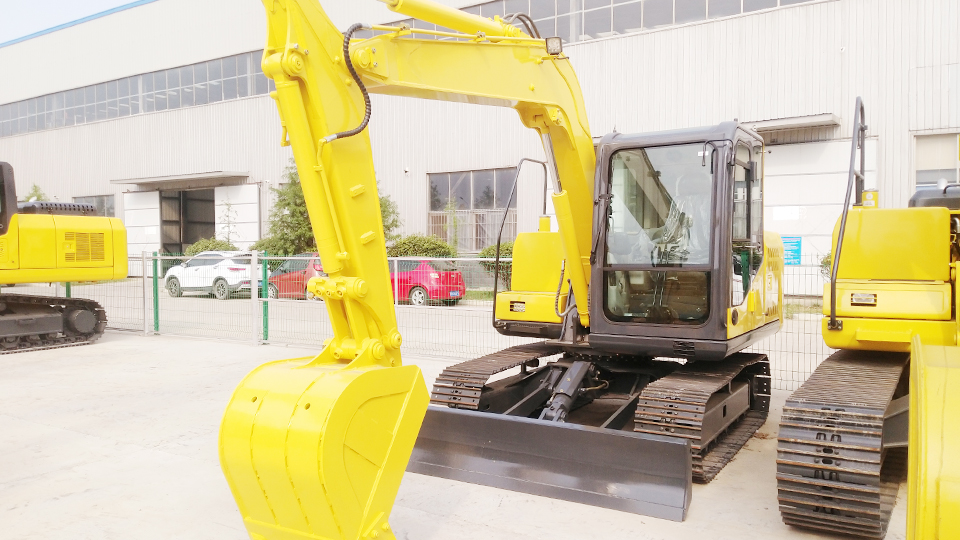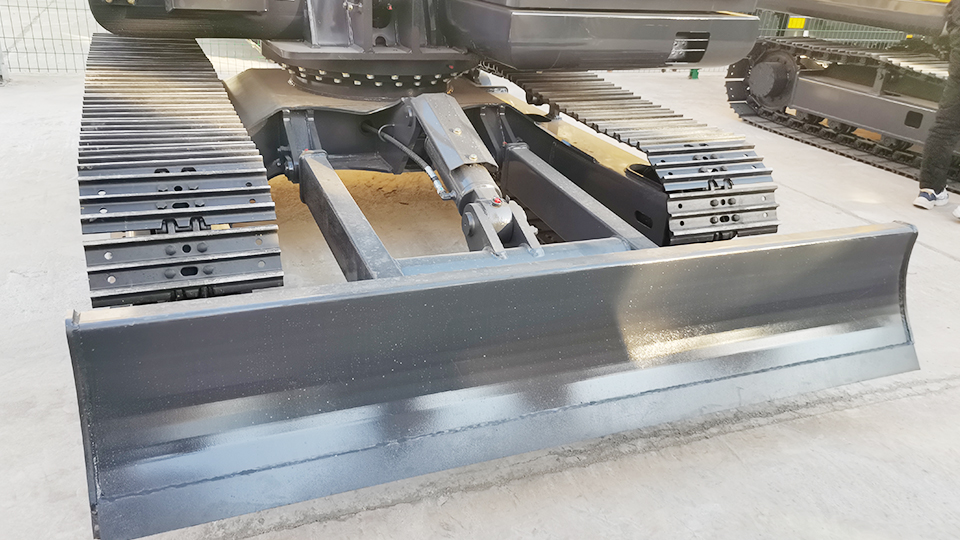The Art and Science of Uptime: A Technical Guide to Excavator Reliability
An excavator is a complex, high-performance machine where dozens of systems—mechanical, hydraulic, electrical, and structural—work in concert under immense stress. The reliability of this workhorse is not a matter of luck but the direct result of a rigorous and disciplined maintenance program. Uptime is the ultimate metric for profitability, and every unplanned hour of downtime represents a significant financial loss. This technical guide delves into the core principles and specific procedures required to maintain excavator reliability, focusing on a proactive, preventive approach rather than a reactive, repair-oriented mindset.
1. The Foundation: A Structured Preventive Maintenance (PM) Program
The cornerstone of excavator reliability is a strictly followed preventive maintenance schedule. This schedule is designed by manufacturers based on extensive engineering and field testing to address wear items and potential failure points before they become critical. Neglecting a single service interval can have a domino effect, leading to catastrophic and costly failures.
A typical PM schedule is tiered by service hours:
Daily (Pre-Start) Inspection: This is a critical, but often overlooked, check that sets the tone for the day. The operator should perform a walk-around inspection, checking for:

Leaking fluids (hydraulic, oil, coolant).
Loose bolts, pins, or missing grease fittings.
Damaged hoses, wires, or structural components (e.g., cracks in the boom or stick).
Proper fluid levels (engine oil, hydraulic fluid, coolant, fuel).
Track tension and undercarriage integrity.
250-Hour Service Interval: This is the first major service. It typically includes:
Engine oil and filter change.
Fuel filter change.
Checking and adjusting track tension.
Comprehensive greasing of all pins and bushings.
500-Hour Service Interval: This builds on the 250-hour service with additional checks:
All 250-hour tasks.
Hydraulic filter change.
Air filter inspection and replacement if needed.
Slew drive oil level check and a sample for analysis.
1000-Hour Service Interval: A more extensive service that addresses major systems:
All 500-hour tasks.
Hydraulic fluid and filter change (on some models).
Final drive oil change.
Cooling system flush and coolant replacement.
Valve adjustment on the engine (manufacturer-specific).
2. The Lifeblood of the Machine: Fluids and Filtration
The fluids and filters are the most important consumable components for a machine's health. The integrity of these components directly determines the lifespan of the engine and hydraulic system.
Engine Oil and Filters: Engine oil lubricates and cools internal components. Contaminated oil leads to accelerated wear on pistons, bearings, and the crankshaft. Always use the manufacturer-recommended oil viscosity and specification. Oil filter quality is equally important, as it traps microscopic particles that can score critical surfaces.
Hydraulic Fluid and Filters: The hydraulic system is the powerhouse of the excavator. Hydraulic fluid must be clean and free of contaminants. Clogged filters can bypass, allowing dirty fluid to circulate and destroy sensitive hydraulic pumps, cylinders, and motors. Regular fluid analysis (e.g., Caterpillar's S·O·S or Komatsu's K-Care) is a predictive tool that can detect metallic particles, glycol, or water, signaling impending component failure long before it's too late.
Fuel and Filters: Clean fuel is paramount for modern high-pressure common rail diesel engines. Water and contaminants in the fuel can damage injectors and the fuel pump, leading to poor performance and expensive repairs. The fuel-water separator and fuel filters must be changed at the specified intervals.
Coolant: The cooling system prevents engine overheating, which can cause severe damage like cracked cylinder heads or warped engine blocks. The coolant's chemical properties degrade over time, losing their ability to protect against freezing, boiling, and corrosion. Coolant should be tested and replaced according to the manufacturer's schedule.
3. Under the Hood: Engine, Cooling, and Electrical Systems

Beyond fluids, the engine and its supporting systems require focused attention.
Air Intake System: A clean air filter is essential for proper combustion. A clogged filter starves the engine of air, causing it to run rich, increase fuel consumption, and produce black smoke. A dirty filter also shortens the life of the turbocharger. The pre-cleaner and filter must be inspected daily, especially in dusty conditions.
Cooling System: The radiator and oil coolers must be kept clean to dissipate heat effectively. Fins can become clogged with dust and debris, reducing cooling efficiency. Pressure-washing these components is a standard maintenance task.
Electrical System: Inspect batteries for corrosion, terminals for tightness, and wiring harnesses for chafing or damage. A healthy electrical system is crucial for a machine's onboard diagnostics, telematics, and operator controls.
4. The Load-Bearing Components: Hydraulics and Structural Integrity
The excavator's ability to dig and lift relies on the integrity of its hydraulic and structural components.
Hydraulic Hoses and Cylinders: Hoses are a high-failure item. They should be inspected for chafing, cracks, bulging, or leaks. A burst hose can lead to a sudden loss of function and a major fluid spill. The chrome rods of hydraulic cylinders should be checked for pitting or scratches, as this damage can destroy the internal seals and lead to expensive cylinder reseals or replacements.
Boom and Stick Integrity: The structural life of the boom, stick, and bucket linkage is critical. They should be visually inspected for hairline cracks, especially around welds and high-stress points. This is especially important for machines used in demolition or rock work.
Pin and Bushing Lubrication: Daily greasing of all pins and bushings in the boom, stick, and bucket linkage reduces friction and wear. Dry pins and bushings lead to premature component failure, creating play in the joints and impacting digging precision.
5. The Undercarriage: A Major Cost Center
The undercarriage accounts for a significant portion of an excavator’s maintenance and repair costs. Proper care is essential to maximizing its lifespan.
Track Tension: Correct track tension is a delicate balance. Tracks that are too tight increase wear on pins, bushings, idlers, and rollers. Tracks that are too loose can de-track and are prone to accelerated wear from slapping. The tension should be checked daily and adjusted based on the ground conditions.
Cleaning: The undercarriage should be cleaned regularly, especially in muddy or abrasive conditions. Trapped mud and rocks can act as a grinding paste, wearing down components rapidly.
Inspecting for Wear: Regularly inspect rollers, idlers, and sprockets for uneven or excessive wear. This can indicate a problem with track alignment or a worn component.
6. The Human Factor: The Role of the Operator
Even the best maintenance program can be undone by a careless operator. Operator skill and practices are a vital, yet often overlooked, part of a reliability strategy.
Proper Warm-up and Shutdown: Allowing the engine and hydraulic system to warm up for 5-10 minutes at a low idle before operation is crucial for proper lubrication and sealing. Similarly, a brief cool-down period before shutdown allows the turbocharger to cool down, extending its life.
Smooth and Controlled Operation: Aggressive digging, fast and sudden swings, or using the excavator as a battering ram puts immense shock loads on the entire machine, from the engine to the final drives. Smooth, controlled operation reduces stress and wear on all components.
Minimizing Idling: Modern machines come with auto-idle shutdown, but operators should still be mindful of idle time. Excessive idling wastes fuel, puts unnecessary hours on the meter, and can cause carbon buildup in the engine.
7. Technology as an Ally: Telematics and Predictive Maintenance
Modern technology provides powerful tools to enhance reliability.
Telematics Systems: Systems like KOMTRAX and Cat Connect are no longer just for tracking. They provide real-time data on machine health, service hours, and fault codes. This data allows fleet managers to schedule maintenance proactively, often before a failure occurs. An alert for a high coolant temperature or low hydraulic pressure can be addressed before the machine suffers a catastrophic failure.
Conclusion
Maintaining excavator reliability is an ongoing, multi-faceted process that requires a technical understanding of the machine's systems and a commitment to disciplined, proactive maintenance. By focusing on a structured PM schedule, using high-quality fluids and filters, and educating operators on best practices, companies can ensure their excavators remain reliable, productive, and profitable assets for their entire service life, minimizing costly downtime and maximizing their return on investment.
Post time:Sep-25-2020
